Abstract
Warmup effects, the repeated within-session transitions from ineffective to effective avoidance, were examined with rats on free-operant shock-delay procedures. The shock-shock and response-shock intervals were kept equal as they were varied. As measured by both response rates and shock rates, the magnitude of within-session change in performance was inversely related to the size of the manipulated intervals. The duration of warmup tended to decrease as the intervals were increased. This finding, that increased shock frequencies do not shorten the warmup, appears to be inconsistent with all interpretations of the warmup that have been offered to date. Late-session performances replicated general features of prior experiments, but differed with respect to details of secondary conclusions in previous reports. These differences may stem from the selection of especially proficient avoiders for previous experiments.
Keywords: warmup in avoidance, free-operant avoidance, shock frequency, subject selection, lever press, rats
Full text
PDF
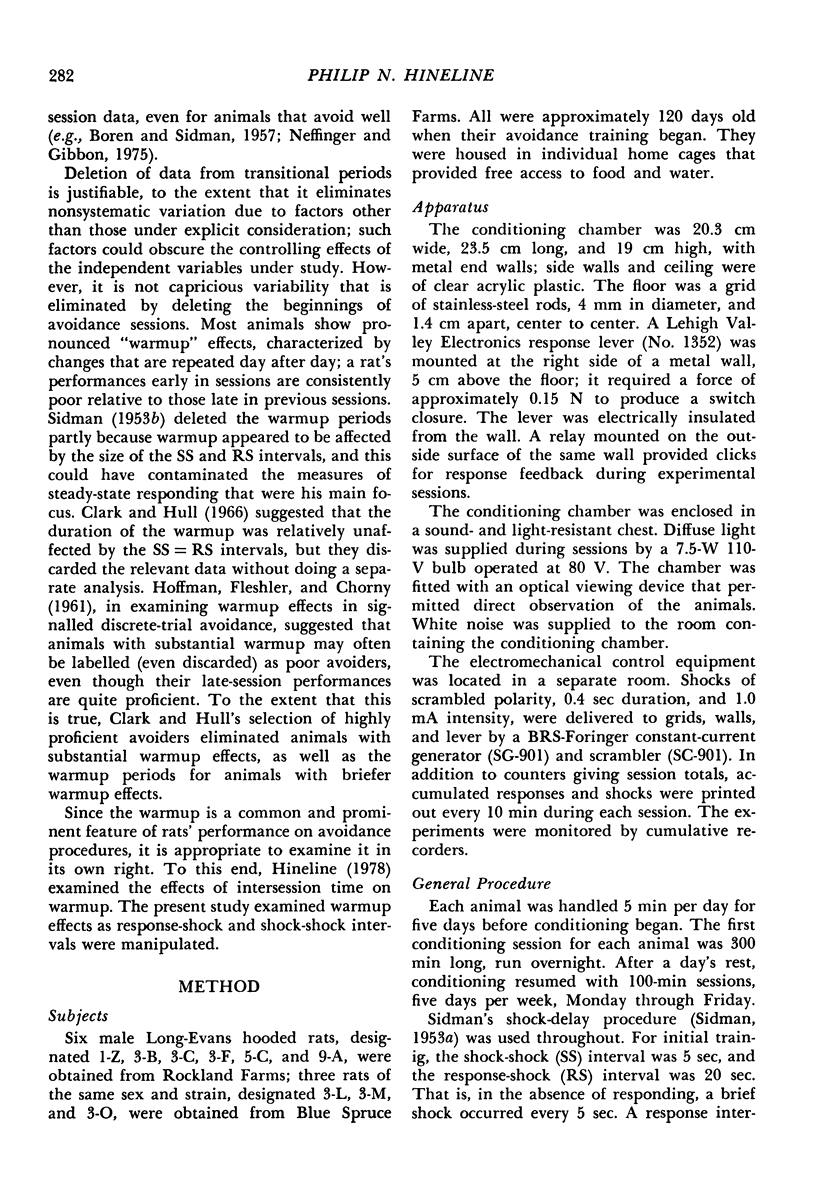

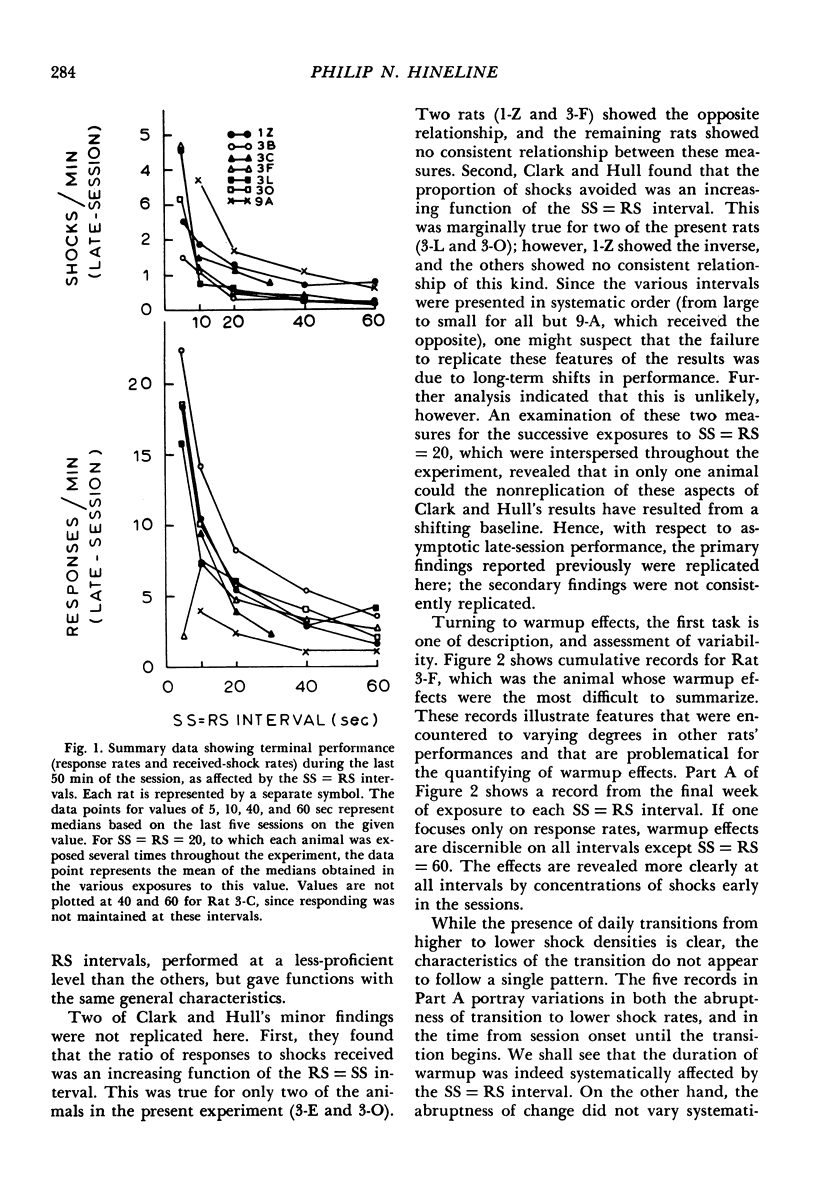


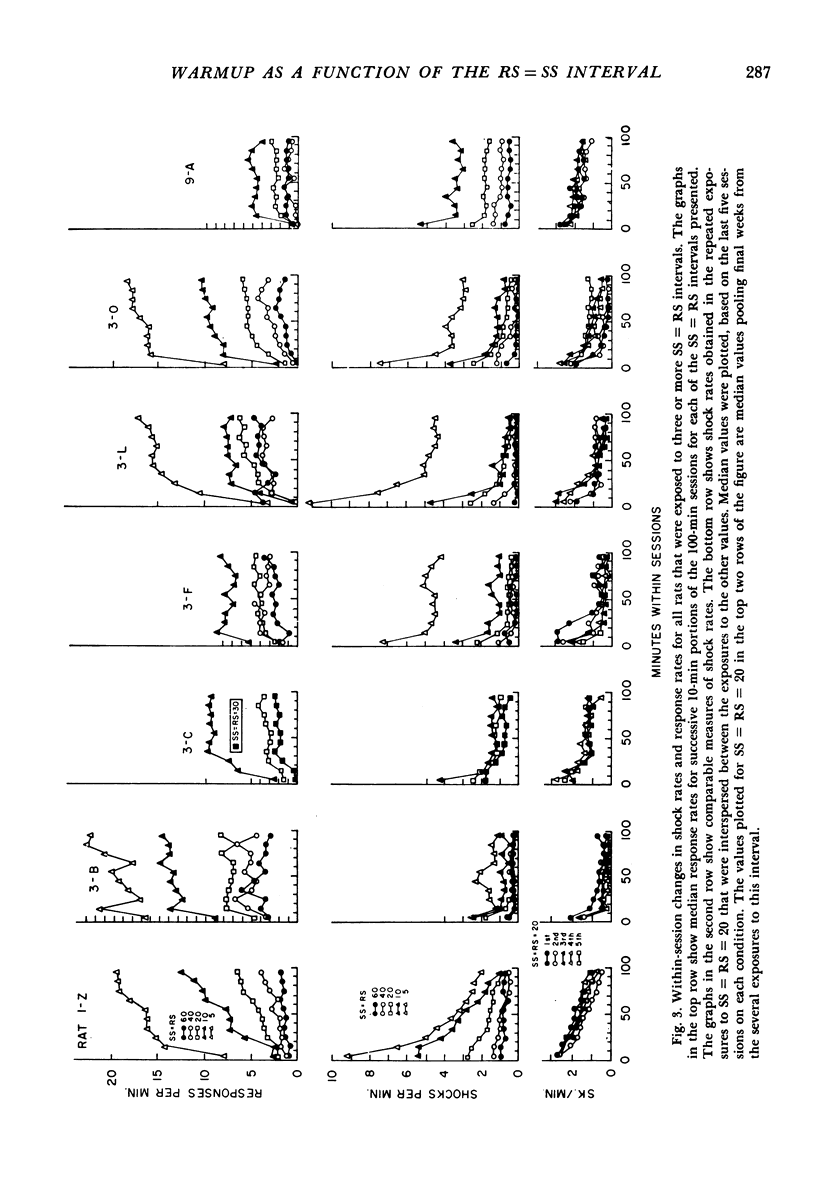
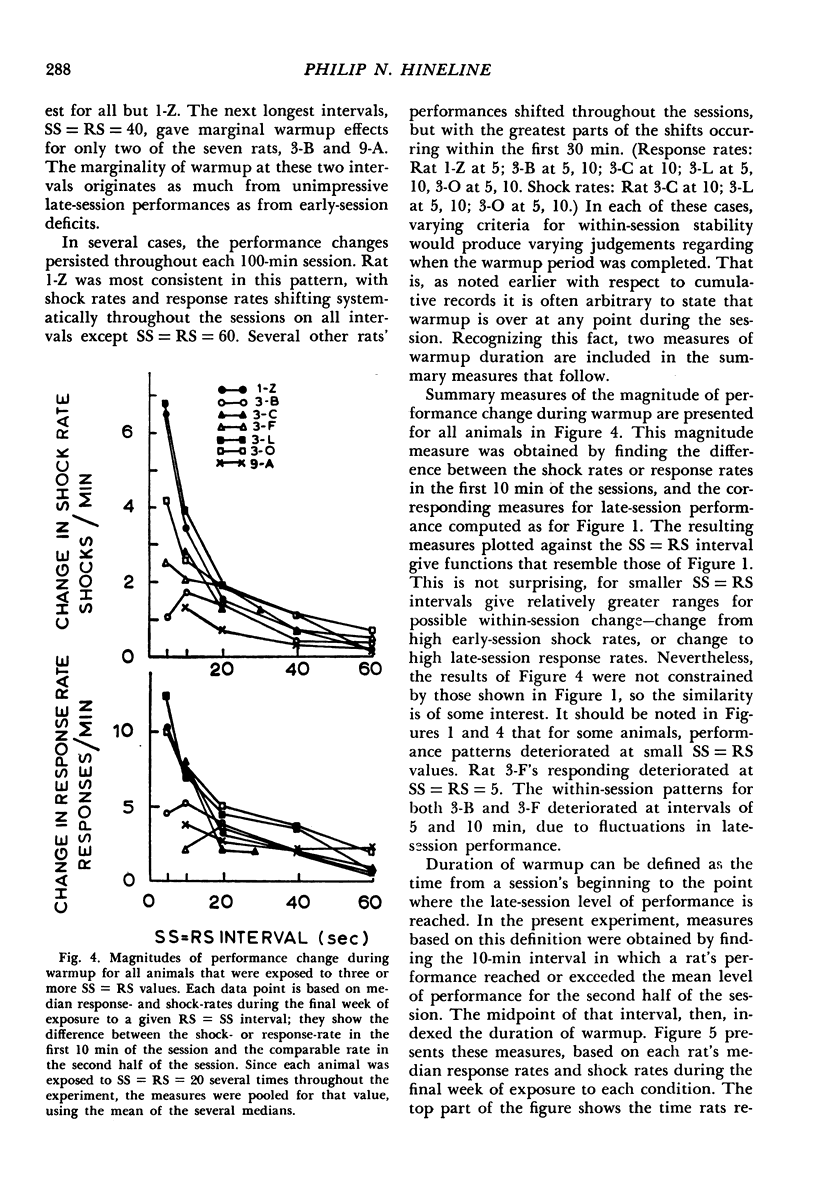
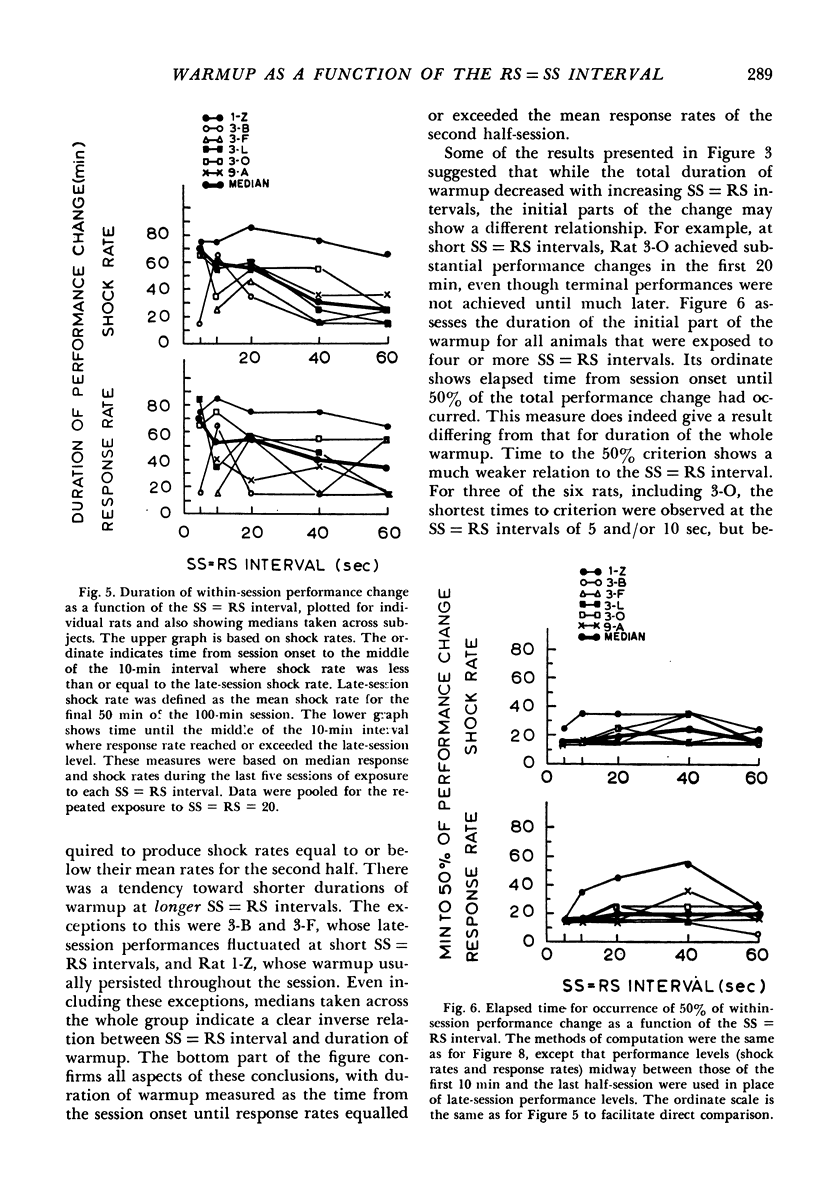

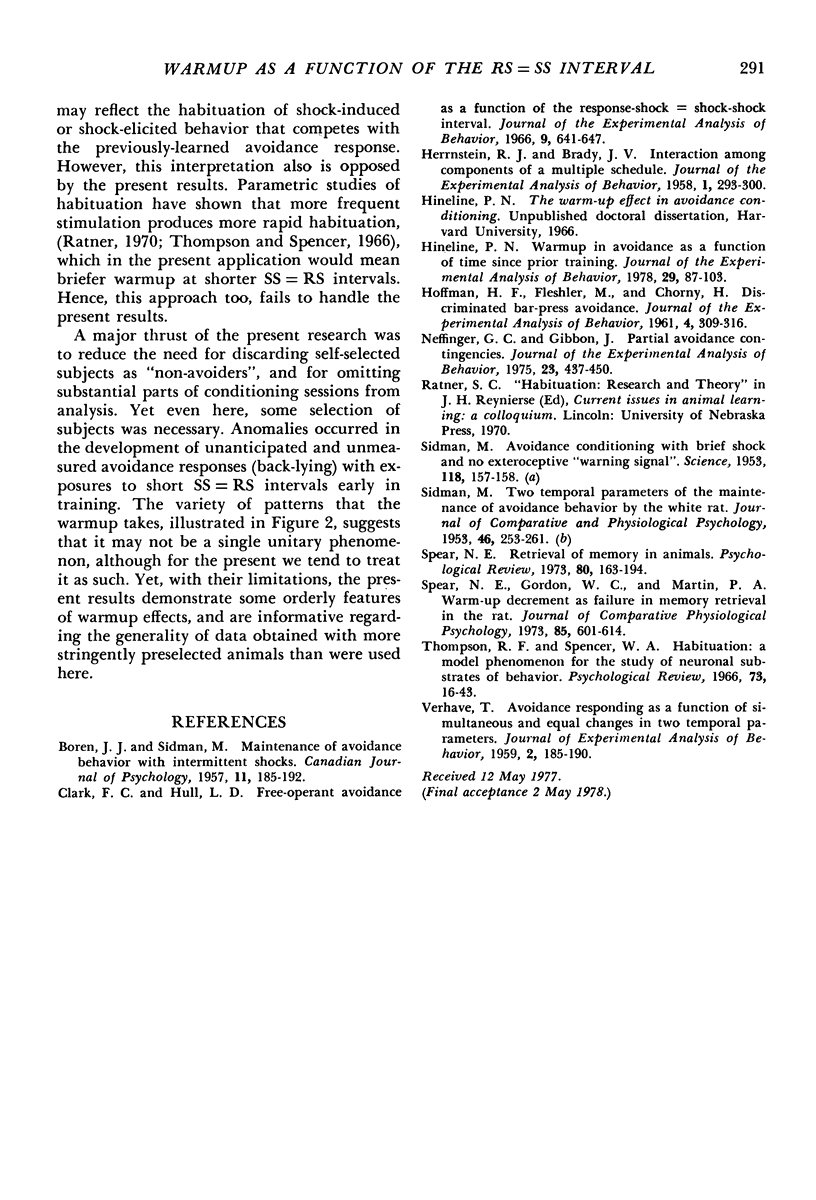
Selected References
These references are in PubMed. This may not be the complete list of references from this article.
- BOREN J. J., SIDMAN M. Maintenance of avoidance behaviour with intermittent shocks. Can J Psychol. 1957 Sep;11(3):185–192. doi: 10.1037/h0083704. [DOI] [PubMed] [Google Scholar]
- Clark F. C., Hull L. D. Free operant avoidance as a function of the response-shock = shock-shock interval. J Exp Anal Behav. 1966 Nov;9(6):641–647. doi: 10.1901/jeab.1966.9-641. [DOI] [PMC free article] [PubMed] [Google Scholar]
- HOFFMAN H. S., FLESHLER M., CHORNY H. Discriminated bar-press avoidance. J Exp Anal Behav. 1961 Oct;4:309–316. doi: 10.1901/jeab.1961.4-309. [DOI] [PMC free article] [PubMed] [Google Scholar]
- Herrnstein R. J., Brady J. V. Interaction among components of a multiple schedule. J Exp Anal Behav. 1958 Oct;1(4):293–300. doi: 10.1901/jeab.1958.1-293. [DOI] [PMC free article] [PubMed] [Google Scholar]
- Hineline P. N. Warmup in avoidance as a function of time since prior training. J Exp Anal Behav. 1978 Jan;29(1):87–103. doi: 10.1901/jeab.1978.29-87. [DOI] [PMC free article] [PubMed] [Google Scholar]
- Neffinger G. G., Gibbon J. Partial avoidance contingencies. J Exp Anal Behav. 1975 May;23(3):437–450. doi: 10.1901/jeab.1975.23-437. [DOI] [PMC free article] [PubMed] [Google Scholar]
- SIDMAN M. Avoidance conditioning with brief shock and no exteroceptive warning signal. Science. 1953 Aug 7;118(3058):157–158. doi: 10.1126/science.118.3058.157. [DOI] [PubMed] [Google Scholar]
- SIDMAN M. Two temporal parameters of the maintenance of avoidance behavior by the white rat. J Comp Physiol Psychol. 1953 Aug;46(4):253–261. doi: 10.1037/h0060730. [DOI] [PubMed] [Google Scholar]
- Thompson R. F., Spencer W. A. Habituation: a model phenomenon for the study of neuronal substrates of behavior. Psychol Rev. 1966 Jan;73(1):16–43. doi: 10.1037/h0022681. [DOI] [PubMed] [Google Scholar]
- VERHAVE T. Avoidance responding as a function of simultaneous and equal changes in two temporal parameters. J Exp Anal Behav. 1959 Jul;2:185–190. doi: 10.1901/jeab.1959.2-185. [DOI] [PMC free article] [PubMed] [Google Scholar]


